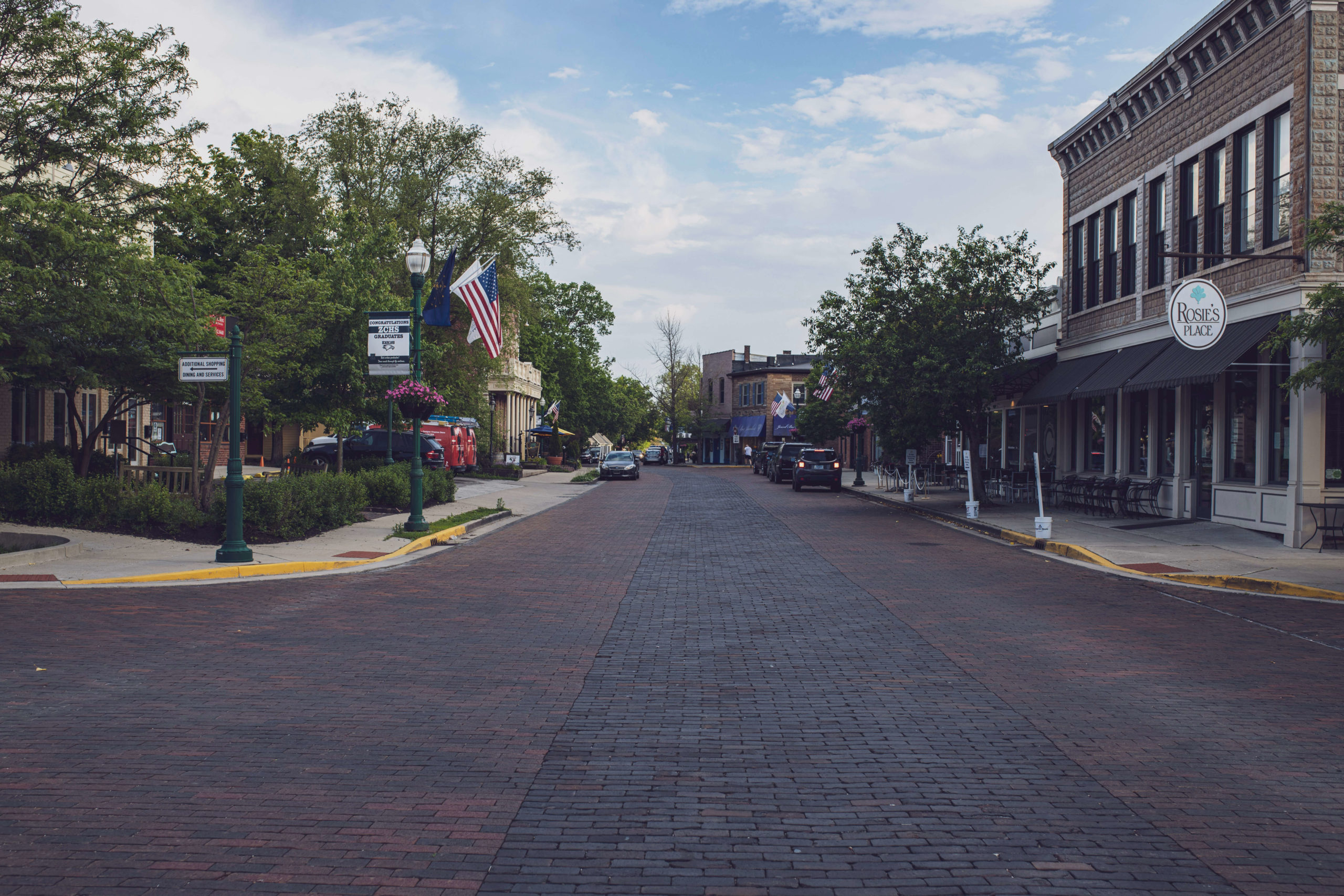My advice: if you hear stories about strange happenings in one of the old house in town, take them as evidence of the past persisting in reminding us that we are not the first residents here!
Do you know Maplelawn Farmstead? You probably do, even if you aren’t aware that you do. We are the family farmstead located next to Mulberry Fields, across from the Zionsville Methodist Church on Whitestown Road. A farmhouse, lots of barns and outbuildings—all white, with red roofs. What you may not know is that all the property around the farmhouse, including the land that has become Mulberry Fields and the Methodist Church, was once Maplelawn. Maplelawn dates back to 1835 and from that time until 2000 was owned by only two families—the Wolff family and the Scott family. Upon the last family member’s death in 2000, the 3.9 acres that now comprises the farmstead was purchased by the Town of Zionsville to be developed into a community park.
But instead a group of concerned Zionsville residents, including the Zionsville Historical Society, worked with Indiana Landmarks and the Zionsville Parks Board to explore the possibility of preserving this intact farmstead for educational purposes.
In the 1830s when Maplelawn was established the family farm was home to 70% of the US population. Today it is home to less than 1%. Nine years ago Maplelawn Farmstead was incorporated as a nonprofit organization dedicated to preserving the spirit of the family farm, to educate future generations about this largely disappearing way of life. From that point to today volunteers from the Zionsville community have worked to bring this property from ruin to usability, and we have done this without a single dollar of taxpayer money.
However, to make this work we must ask for contributions—membership, capital renovation campaigns, or other grants from our Zionsville community. So I am asking for your support to help us continue in our educational endeavors, in our ongoing renovations, in our mission to create experiences that connect people to the rich, rural heritage of an Indiana family farm. All contributions to Maplelawn Farmstead, Inc. are tax deductible.
In 2011 Maplelawn Farmstead was officially recognized as a Historic District on the National Register of Historic Places.
For more information on membership, to schedule a tour, or to learn more about our educational programs and events (including Summer Camp at Maplelawn for children entering grades 3 – 5) please contact Shelley Lakshmanan, 873-4801 (lakshell@aol.com) or visit our website www.maplelawnfarmstead.org
Old House Love
By Jennifer Bucher
Old homes have stories to tell.
If you live in an old home you know about engaging in archeology and genealogy projects. Old homes hold histories like families. There is sometimes unexpected pride or a startling skeleton in the closet. Did you find an old liquor bottle in the cellar? Old shoes in the attic (I mean OLD shoes…not just old shoes)? A black and white photo lodged behind a cabinet?
Putting together the pieces of an old home’s story is like working to solve a puzzle or a mystery.
I often wonder who built our home or who removed the original wood stove? We have two old chimneys in our house-one on the exterior and one that is capped off inside the attic. When were these chimneys last used? Were they for coal? Wood? That place where the wall seems a little wonky-did a door used to be there? And did there used to be a wall where the floor doesn’t quite match? I ask myself these questions all the time.
Even though I have the abstract for my home, I really haven’t been able to tell who built it. I do know that Zionsville’s postmaster, John Hodge and his wife, Edna, lived in this house-which they purchased in 1927-with their children Vivian and Margaret. After he resigned as Zionsville’s Clerk-Treasurer, Mr. Hodge was appointed postmaster by President Truman (my six degrees of separation from President Truman is because of this home!) and the home stayed in his family until we purchased it from Margaret’s daughter in 2011. The Hodge’s were active in the Zionsville community and John served on the very first board of the Zionsville Lions Club.
After John and Edna passed away, their daughter, Vivian (Mrs. Alfred Mills) operated a “boarding house” at the site. My friend, Drew Kogan, remembers riding his bike past the house where a “Rooms for Let” sign hung above the door. According to my neighbors, Roger and Nancy Seale, Mrs. Alfred Mills would only allow women boarders in the home. Nancy recalls that Mrs. Mills was even anxious about allowing a man in to help change a light bulb or make repairs inside the home.
The Hodge’s daughter, Margaret, couldn’t bear to part with her childhood home and it remained in her ownership as a rental for many years. Unfortunately, rental homes live a very hard life and not many clues remain in the house. This old home is a difficult puzzle to solve.
The Pantry/Laundry Room
The room at the very back of our home was clearly an afterthought. This room was originally an exterior porch that was converted to a sleeping porch and finally completely enclosed to hold the laundry room. When we purchased the home, there was a Formica counter over the cellar’s trap door, an old sink with a lovely top and rusty metal base, and peel and stick vinyl tile on the floor. I was honestly completely aggravated every time I walked through this room. It was the back entrance to our home and was often a dumping ground for anything that needed to go in or out of the house. The only thing charming about this room were the walls that were still covered in exterior siding.
It needed a new layout and much better storage, but the trap door limited our options.
We drew up some simple plans and enlisted village craftsman, Ken Byler, to move pipes and ducts, build new cabinets and lay a pretty new floor.
We wanted to keep the sink top and Ken was able to build a new wood cabinet base. He crafted a glass door cupboard above a built-in poplar-topped table. Porcelain tiles from Claghorn Custom Flooring were cut into brick shapes and laid in a herringbone pattern.
As with the rest of the home, everything was painted a crisp white.
I now come home to a delightful and welcoming pantry.



